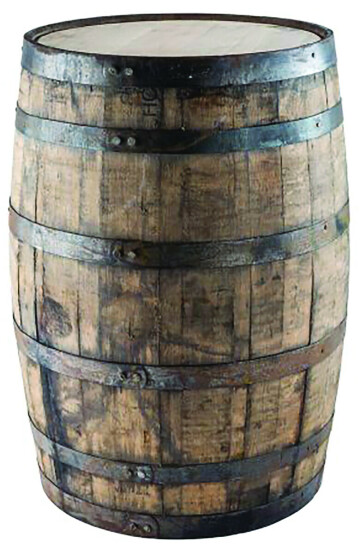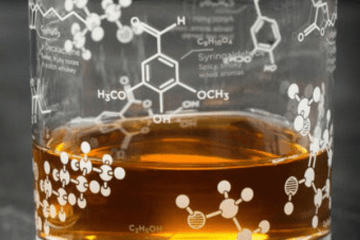The Science of Whiskey
Montana Science Center Introduces New 21+ After Dark Event
As I stepped into the Montana Science Center—just off West Main Street across from the Gallatin Valley Mall—I was immediately drenched in cheerful whoops and hollers from children tugging their parents between science exhibits. Hanging from the ceiling on my left, a gigantic stuffed tarantula hung upside down next to an equally impressive octopus. In another display, an impressive rattlesnake taxidermy sprawled out over a beige, sandy backdrop. Every troupe seemed to have similar reactions to the collection of oddities and interactive items: ‘oohs’ and ‘aahs’ floated over curated pieces, and the entire room was filled with excited stomps of little feet. I began to wonder if I’d come to the right place. Could this be the very same institution hosting an adult event to learn more about the art of distilling whiskey?
While alcohol production has certainly experienced a tumultuous history in America’s past, it is currently seeing a boom in popularity. Across the nation, more and more people are becoming interested in the process of homebrewing: a practice that involves fermenting various ingredients with yeast to produce wide varieties of alcoholic beverages. In fact, according to a study released from The Brewers Association in 2017, 1.1 million people in the United States had tried their hand at the craft—40% of them brewing for the first time within four years. But less is known about the act of distillation: a process responsible for hard liquors, such as vodka and whiskey, and one which has continued to remain federally illegal for private individuals to practice since the ratification of the 18th Amendment (without the proper permits, that is).
So, what does the Montana Science Center aim to teach curious adults about this lesser known process? I spoke with Abby Turner, the organization’s Executive Director, to learn more about their upcoming Science of Whiskey event, taking place on April 14th. She described its overall purpose as an educational opportunity, with a flair for entertainment.
Turner explains; “The ‘Science of Whiskey’ event is part of our ‘After Dark’ series, a once-a-month program for adults in the area. “This event is for any age, 21 and over, that just wants an opportunity to come to the Science Center, maybe without kids, or to experience it on their own. Part of the intent was to come up with something fun for adults to do. The community used to have some ‘wine and paint’ type places, so we worked with the idea that adults are always looking for something to do that’s outside of just going to the bar.”
Poking my head around the Science Center a bit, my observations supported Turner’s claims that many exhibits didn’t need to wholly direct themselves towards a younger audience. When I first arrived, I had the pleasure of being greeted by Chiara Schober, the organization’s Visitor Services’ liason. She regaled me with her experiences of helping to manage the displays, and even explained how she conducted feedings for their live, poison dart frog exhibit. It must have been fairly apparent that I looked apprehensive about combining poison dart frogs and children, because she continued by immediately educating me on the source of the frog’s toxicity: their diet. Schober assured me that poison dart frogs become volatile and poisonous from consuming hosts of venomous millipedes, centipedes and other insects. After eating the same sort of creatures long enough, the mucus they secrete contains those toxins. So, because these frogs were pointedly denied toxins to accumulate, they wouldn’t hurt a fly. Actually, they certainly would, but they sure couldn’t poison it.
Another exhibit, “Earth in Layers,” is intended to teach viewers about Earth Science. The curated section approached questions around the age of rocks, the origins of fossils, and the concept of topography. One booth even invited viewers to shape an enclosure known as a “sand table” into different heights to study contour lines and view interactive projections overlaid across various hills and valleys that visitors could model.
With such interesting enclosures and technologies to share with the public, Turner is well aware of the Science Center’s appeal to both adult and younger audiences. In fact, that aspect of attendance helped to shape the organization’s ‘After Dark’ series, and helped inspire their ‘Science of Whiskey’ event. She continued by providing insight about the program’s plan for fostering adult appeal:
“We get a lot of requests from adults wondering if they can come hang out here, so that went into creating a program or series of events like MSC’s ‘After Dark,’ and that’s the bulk of it; that’s what Science of Whiskey is part of. Once a month we have an adult program, and in April it’s ‘Science of Whiskey.’ And, you know, adults like to pair something with a little bit of fun, maybe different takes on drinking—though that’s not intended to always be the focus. Since craft cocktails, craft liquor, and craft beer are big in our area, we’re diving into ‘How is whiskey made? How do you taste whiskey? What are the differences between the whiskeys, and why?’ Our event aims to answer all those questions, while partnering with a local distillery. Wild Rye will be doing the whiskey for ‘Science of Whiskey,’ and they’re also doing the cocktails for the ‘Chemistry of Cocktails’ event in June. It’s super fun… we’re excited!”
Not only will the event focus on questions that surround whiskey, it will also be led by one of Turner’s colleagues—Sabrina Holland—a fellow educator who happens to be passionate about distilling. Turner hopes that this guest speaker will help to shine a light onto others’ interests about the science behind alcohol, and use her skills to create educational spaces that host their fair share of fun. Turner announced, “We have a gal coming down from Butte who is going to be our guest speaker: Sabrina Holland. She and I met at an educators’ conference this past summer, and it is just her passion. Whiskey tasting—really understanding how whiskey is distilled and how it’s made—is just a passion of hers, so she’s become very good at leading those lessons. She works for another education-based nonprofit in Montana and we’ve asked her to come and help with this event as well.”
As the doors of the Montana Science Center prepare to open for all sorts of adult science enthusiasts, their upcoming ‘Science of Whiskey’ event is sure to please those who find themselves lucky enough to attend.
Whether focusing on the alcohol or the exhibits, one thing is certain: no matter what your age or background may be, there will always be previously unknown corridors of knowledge to meander through. Turner wrapped-up our conversation with a message to any and all who might be interested in exploring the Montana Science Center in the future: “Our message, I suppose, is about all our ‘After Dark’ events. We’re doing this event to give adults permission to play, and permission to have fun again—and to come into spaces that are traditionally known as ‘children-focused,” because science is for everybody, and learning is for everybody. If you want to come and experience the Science Center in a more adult-forward kind of program, this is the time… by learning through play, anybody can come have fun with science.”
While remaining tickets may be limited, if you would like to attend the Montana Science Center’s ‘Science of Whiskey’ event, please visit https://montanasciencecenter.org/learn/events for more information on pricing and availability.

